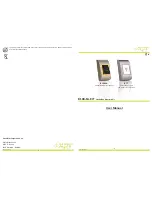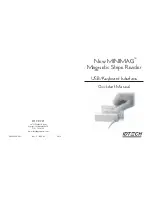
Device description
Leuze electronic GmbH + Co. KG
BCL 208i
19
4.5.2
Raster scanner (raster line)
Multiple scan lines scan the label. Due to the optical opening angle, the reading field width is dependent on
the read distance. Provided the code is located in the reading field, it can be read during standstill. If the
code moves through the reading field, it is scanned by multiple scan lines.
The integrated code reconstruction technology permits twisting of the bar code (tilt angle) within certain lim-
its. These are dependent on the transport speed, the scanning rate of the scanner and the bar code proper-
ties. In most cases, everywhere a line scanner is used, a raster scanner can be used.
Areas of application of the raster scanner
• With the bars of the bar code arranged perpendicular with respect to the conveying direction ("picket
fence arrangement")
• With bar codes with low height displacement
• With very glossy bar codes
NOTICE
There may not be two or more bar codes in the raster detection range simultaneously.
Fig. 4.5:
Deflection principle for the raster scanner
4.6
Fieldbus systems
Various product variants of the BCL 200i series are available for connecting to different fieldbus systems
such as PROFINET, Ethernet, and EtherNet/IP.
4.6.1
Ethernet
The BCL 208i is designed as an Ethernet device (acc. to IEEE 802.3) with a standard baud rate of
10/100 Mbit. On delivery, each BCL 208i comes with a unique MAC-ID; this ID cannot be changed.
The BCL 208i automatically supports the transmission rates of 10 Mbit/s (10Base T) and 100 Mbit/s
(100Base TX), as well as auto-negotiation and auto-crossover.














































